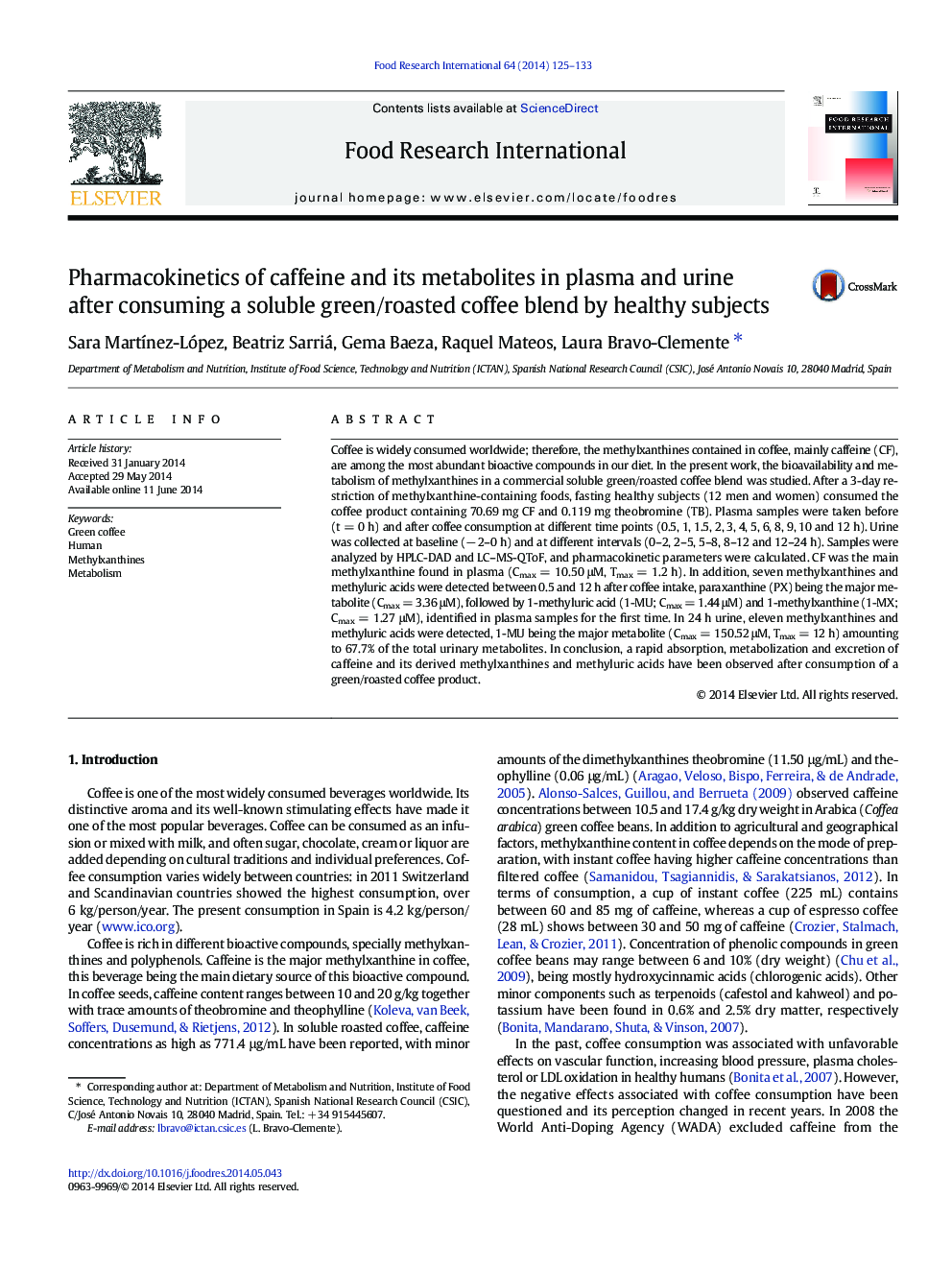| Article ID | Journal | Published Year | Pages | File Type |
|---|---|---|---|---|
| 6396560 | Food Research International | 2014 | 9 Pages |
Abstract
Coffee is widely consumed worldwide; therefore, the methylxanthines contained in coffee, mainly caffeine (CF), are among the most abundant bioactive compounds in our diet. In the present work, the bioavailability and metabolism of methylxanthines in a commercial soluble green/roasted coffee blend was studied. After a 3-day restriction of methylxanthine-containing foods, fasting healthy subjects (12 men and women) consumed the coffee product containing 70.69 mg CF and 0.119 mg theobromine (TB). Plasma samples were taken before (t = 0 h) and after coffee consumption at different time points (0.5, 1, 1.5, 2, 3, 4, 5, 6, 8, 9, 10 and 12 h). Urine was collected at baseline (â 2-0 h) and at different intervals (0-2, 2-5, 5-8, 8-12 and 12-24 h). Samples were analyzed by HPLC-DAD and LC-MS-QToF, and pharmacokinetic parameters were calculated. CF was the main methylxanthine found in plasma (Cmax = 10.50 μM, Tmax = 1.2 h). In addition, seven methylxanthines and methyluric acids were detected between 0.5 and 12 h after coffee intake, paraxanthine (PX) being the major metabolite (Cmax = 3.36 μM), followed by 1-methyluric acid (1-MU; Cmax = 1.44 μM) and 1-methylxanthine (1-MX; Cmax = 1.27 μM), identified in plasma samples for the first time. In 24 h urine, eleven methylxanthines and methyluric acids were detected, 1-MU being the major metabolite (Cmax = 150.52 μM, Tmax = 12 h) amounting to 67.7% of the total urinary metabolites. In conclusion, a rapid absorption, metabolization and excretion of caffeine and its derived methylxanthines and methyluric acids have been observed after consumption of a green/roasted coffee product.
Related Topics
Life Sciences
Agricultural and Biological Sciences
Food Science
Authors
Sara MartÃnez-López, Beatriz Sarriá, Gema Baeza, Raquel Mateos, Laura Bravo-Clemente,
